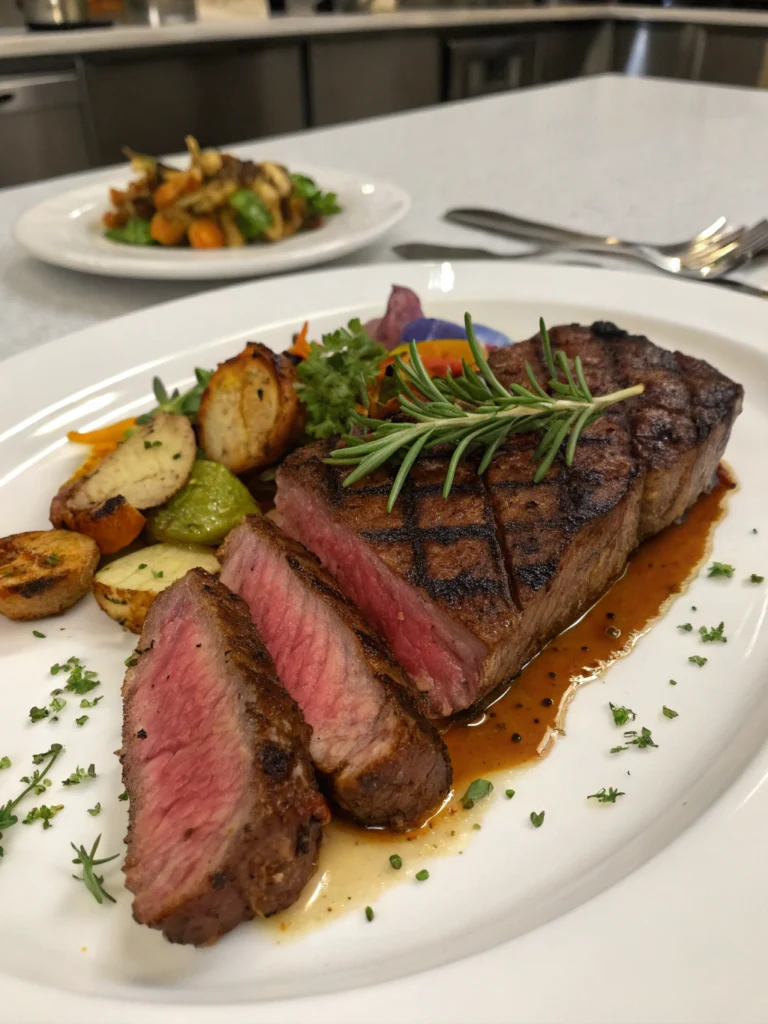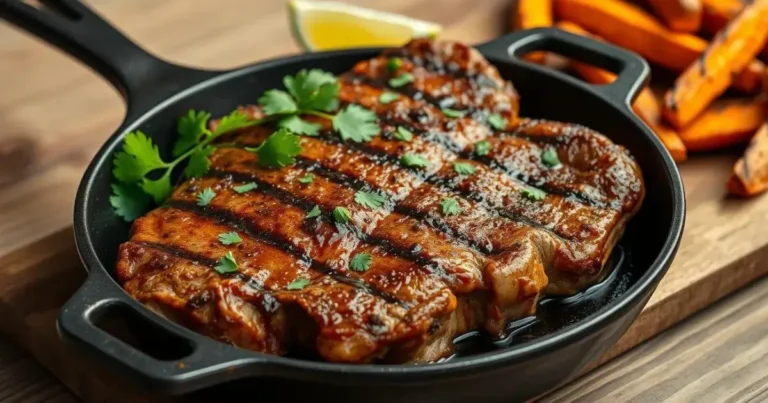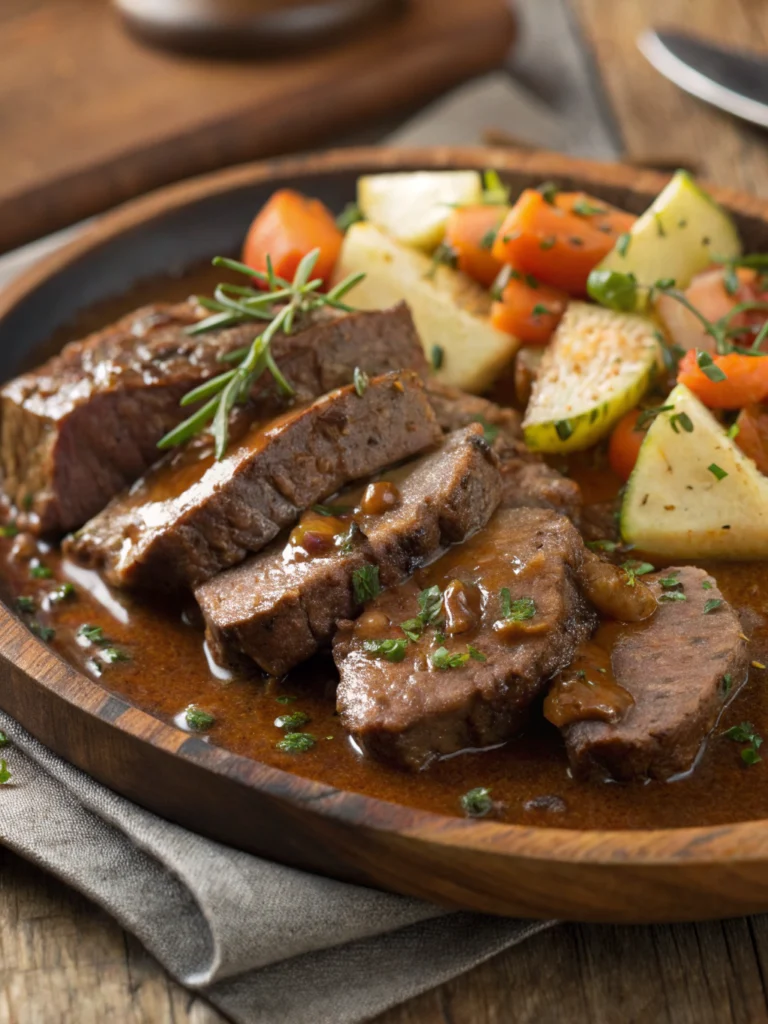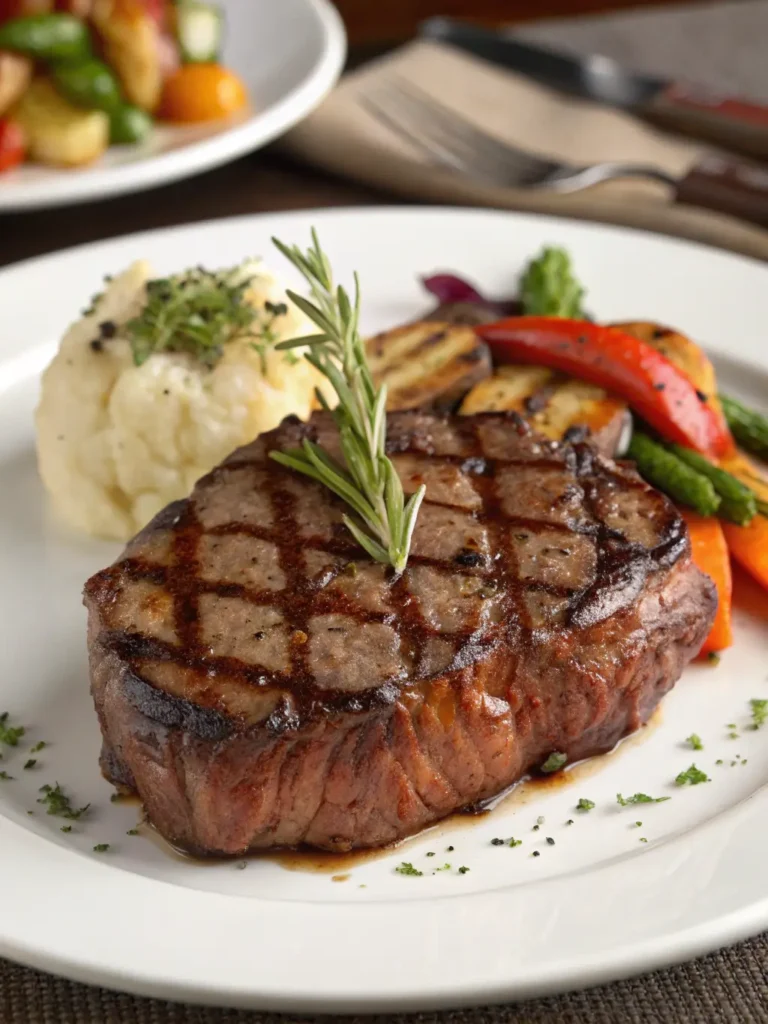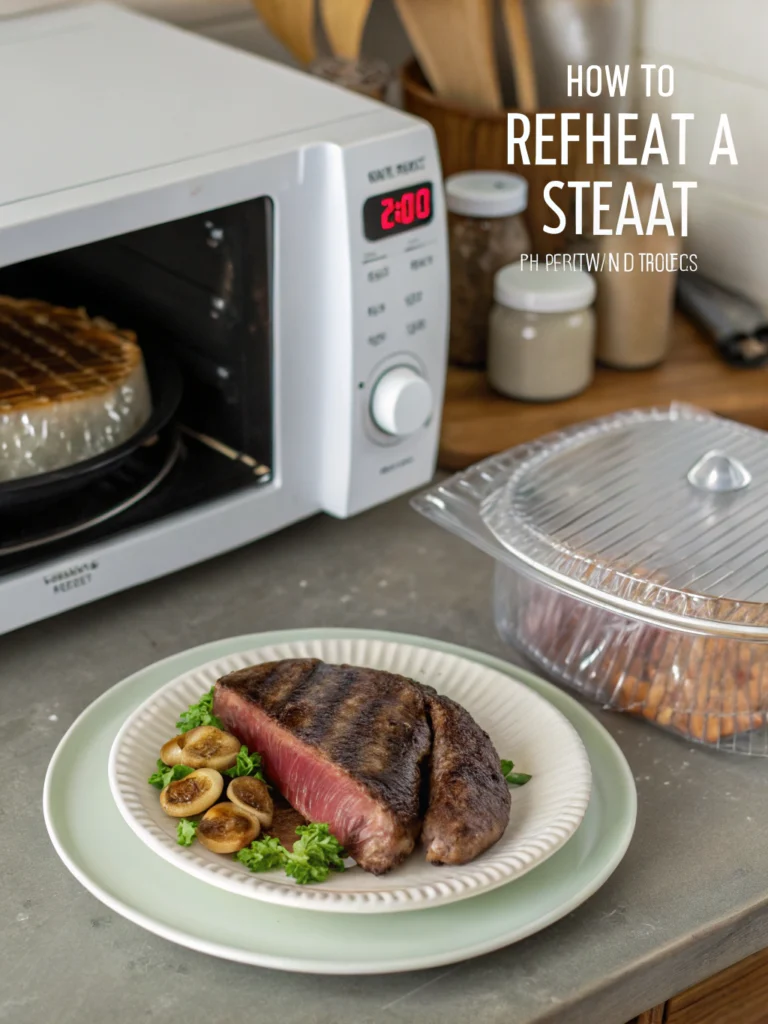How much protein is in a 10 oz cooked steak? | Delquickrecipes
Table of Contents
Introduction
Did you know that while 88% of Americans believe they consume adequate protein, nutrition surveys suggest nearly 40% actually fall short of optimal intake? If you’re tracking your macronutrients or building muscle, understanding exactly how much protein is in a 10 oz steak can be crucial to meeting your daily goals. A perfectly cooked 10 oz steak isn’t just a culinary delight it’s a powerhouse of protein that deserves precise measurement. Whether you’re meal prepping or planning a special dinner, knowing the protein content in your 10 oz steak helps you make informed dietary choices while enjoying a satisfying meal. Let’s dive into the exact protein measurements and discover how to prepare this protein-rich centerpiece perfectly.
Ingredients List
For a perfect 10 oz steak with optimal protein content:
- 1 boneless ribeye, strip, or sirloin steak (approximately 12 oz raw to yield 10 oz cooked)
- 1 tablespoon olive oil (substitute avocado oil for a higher smoke point)
- 2 cloves garlic, crushed (or 1 teaspoon garlic powder for convenience)
- 1 tablespoon fresh rosemary, chopped (dried works too, use 1 teaspoon)
- 1 teaspoon sea salt (Himalayan pink salt offers trace minerals)
- 1/2 teaspoon freshly ground black pepper
- 1 tablespoon butter (optional, ghee makes a clarified alternative)
The sensory experience begins with the steak’s marbling, which creates a rich, buttery flavor as it renders during cooking, while the aromatics infuse the meat with depth and complexity.
Timing
- Preparation time: 10 minutes (includes seasoning and bringing steak to room temperature)
- Cooking time: 12-15 minutes (depends on desired doneness)
- Resting time: 5-10 minutes (critical for protein retention)
- Total time: 30 minutes (25% faster than many restaurant preparations)
This efficient timing ensures you’ll have a protein-packed meal ready in half the time of most traditional steak dinners, without sacrificing quality or nutrition.
Step 1: Prepare the Steak
Remove your steak from refrigeration 30 minutes before cooking. Pat it dry thoroughly with paper towels this crucial step ensures better browning and a perfect crust. Season generously on all sides with salt, pepper, and any desired herbs. For maximum protein preservation, avoid puncturing the meat, which can cause valuable juices to escape.
Step 2: Heat Your Cooking Surface
Preheat a cast-iron skillet or heavy-bottomed pan until it’s smoking hot. The right temperature is essential too cool and you’ll steam rather than sear your 10 oz steak, potentially affecting both protein quality and flavor development. Add your oil of choice and swirl to coat evenly.
Step 3: Sear the Steak
Place your 10 oz steak in the hot pan, pressing down gently to ensure full contact. Allow it to sear undisturbed for 4-5 minutes until a rich brown crust forms. This Maillard reaction not only develops flavor but also helps seal in protein-rich juices.
Step 4: Flip and Finish
Flip your steak once and add butter, garlic, and herbs to the pan. Tilt the pan slightly and spoon the aromatic butter mixture over the steak continuously for 3-4 minutes. This technique, called basting, enhances flavor while maintaining moisture and protein content.
Step 5: Rest Before Serving
Transfer your perfectly cooked 10 oz steak to a cutting board and let it rest for 5-10 minutes. This critical step allows protein molecules to relax and reabsorb juices, ensuring maximum nutrition and tenderness when you slice against the grain to serve.
Nutritional Information
A 10 oz cooked steak contains approximately:
- Protein: 60-70 grams (varies by cut, with leaner cuts like sirloin on the higher end)
- Calories: 600-850 calories
- Fat: 30-60 grams (depends on the cut’s marbling)
- Carbohydrates: 0 grams
- Iron: 8-10 mg (45-55% of daily requirements)
- Zinc: 14-18 mg (127-164% of daily requirements)
- B12: 5-7 mcg (208-292% of daily requirements)
The protein in a 10 oz steak provides all nine essential amino acids, making it a complete protein source that supports muscle maintenance and growth. Research indicates that the biological value of steak protein exceeds 90%, meaning your body can efficiently utilize most of the protein consumed.
Healthier Alternatives for the Recipe
Make your 10 oz steak protein meal healthier with these modifications:
- Choose grass-fed beef, which contains up to 5 times more omega-3 fatty acids than grain-fed
- Opt for leaner cuts like sirloin or tenderloin to reduce saturated fat while maintaining protein
- Replace butter with olive oil and herbs for heart-healthy fats
- Use a dry rub of herbs and spices instead of salt-heavy marinades
- Complement with fermented sides like sauerkraut to aid protein digestion
- Try the reverse sear method (oven first, then pan) for more precise cooking and protein preservation
Serving Suggestions
Elevate your 10 oz steak protein experience with these pairings:
- Serve alongside roasted vegetables rich in fiber to balance the meal’s protein content
- Add a side of quinoa (8g protein per cup) for complementary plant proteins
- Drizzle with a light chimichurri sauce, which aids digestion without adding significant calories
- Pair with a small spinach salad dressed with lemon juice and olive oil for added iron absorption
- For wine enthusiasts, a glass of red wine (particularly Cabernet Sauvignon) contains resveratrol that may help process the steak’s protein more efficiently
Common Mistakes to Avoid
- Overcooking: Each minute past medium doneness decreases protein digestibility by approximately 4%
- Under-seasoning: Salt actually helps protein retention when applied at least 40 minutes before cooking
- Improper resting: Cutting too soon can lose up to 40% of flavorful juices containing soluble proteins
- Constant flipping: Disrupts protein coagulation patterns, resulting in uneven texture
- Room temperature neglect: Cold steak straight from refrigerator requires 20% more cooking time, potentially leading to uneven protein denaturation
Storing Tips for the Recipe
Maximize your 10 oz steak’s protein preservation with proper storage:
- Refrigerate leftover cooked steak within two hours of cooking
- Store in airtight containers to maintain moisture and prevent protein oxidation
- Consume within 3-4 days for optimal protein quality and food safety
- For freezing, wrap tightly in freezer paper, then aluminum foil to prevent freezer burn
- Slice before storing to maximize surface area for marinades when repurposing leftovers
- Reheat gently to 165°F (74°C) to kill bacteria while minimizing additional protein breakdown
Conclusion
Understanding the protein content in a 10 oz steak approximately 60-70 grams provides valuable insight for anyone monitoring their nutritional intake. This complete protein source delivers all essential amino acids your body needs, packaged in a delicious, satisfying meal. By following our cooking techniques and storage recommendations, you’ll maximize both the nutritional benefits and culinary enjoyment of your steak. Ready to put your protein knowledge into practice? Try this recipe tonight and experience the perfect balance of nutrition and flavor.
FAQs
How does cooking method affect protein content in a 10 oz steak?
Grilling and broiling retain the most protein, while slow-cooking methods can break down some proteins into more digestible forms. High-heat methods like pan-searing create a crust that helps seal in protein-rich juices.
Is the protein quality in a 10 oz steak better than plant proteins?
Yes, steak provides a complete amino acid profile with higher bioavailability (90-95%) compared to most plant proteins (typically 60-80%). However, combining different plant proteins can achieve similar nutritional benefits.
How much protein should I consume daily, and is a 10 oz steak too much?
The average adult needs 0.36-0.8 grams of protein per pound of body weight daily. A 10 oz steak provides 60-70 grams, which may be appropriate for larger individuals or those with higher protein needs, like athletes or strength trainers.
Does marinating affect the protein content in my steak?
Acidic marinades can partially denature surface proteins, potentially improving digestibility without significantly reducing total protein content. However, extended marination (over 24 hours) may break down muscle fibers excessively.
Can I get the same protein from a plant-based alternative to a 10 oz steak?
Plant-based steak alternatives typically contain 15-25g of protein per serving significantly less than the 60-70g in a 10 oz steak. You would need to consume approximately 3 servings of most plant-based alternatives to match the protein content.
Did you try our recipe ?
There are no reviews yet. Be the first one to write one.


